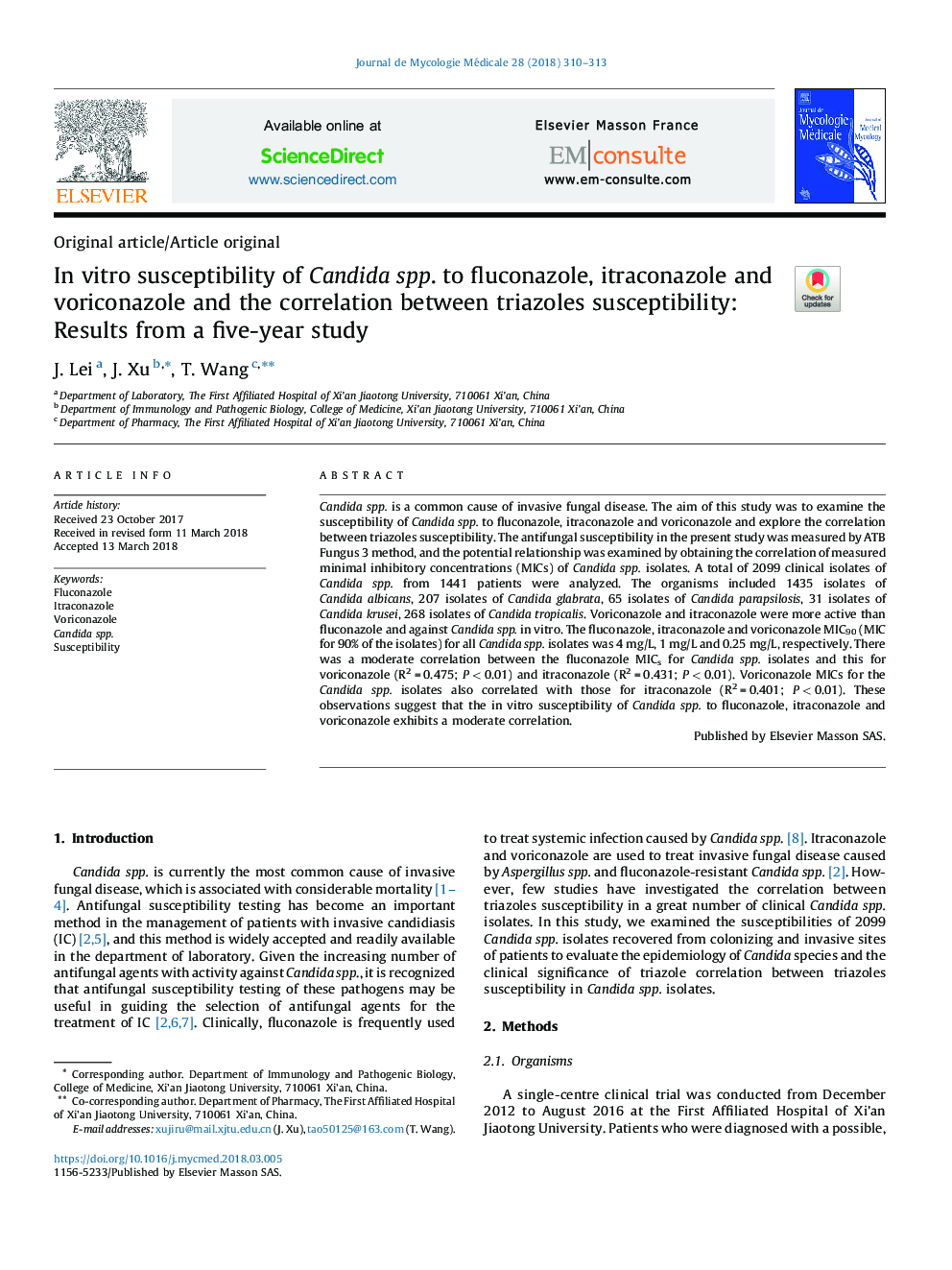| Article ID | Journal | Published Year | Pages | File Type |
|---|---|---|---|---|
| 8716501 | Journal de Mycologie Médicale / Journal of Medical Mycology | 2018 | 4 Pages |
Abstract
Candida spp. is a common cause of invasive fungal disease. The aim of this study was to examine the susceptibility of Candida spp. to fluconazole, itraconazole and voriconazole and explore the correlation between triazoles susceptibility. The antifungal susceptibility in the present study was measured by ATB Fungus 3 method, and the potential relationship was examined by obtaining the correlation of measured minimal inhibitory concentrations (MICs) of Candida spp. isolates. A total of 2099 clinical isolates of Candida spp. from 1441 patients were analyzed. The organisms included 1435 isolates of Candida albicans, 207 isolates of Candida glabrata, 65 isolates of Candida parapsilosis, 31 isolates of Candida krusei, 268 isolates of Candida tropicalis. Voriconazole and itraconazole were more active than fluconazole and against Candida spp. in vitro. The fluconazole, itraconazole and voriconazole MIC90 (MIC for 90% of the isolates) for all Candida spp. isolates was 4 mg/L, 1 mg/L and 0.25 mg/L, respectively. There was a moderate correlation between the fluconazole MICs for Candida spp. isolates and this for voriconazole (R2 = 0.475; P < 0.01) and itraconazole (R2 = 0.431; P < 0.01). Voriconazole MICs for the Candida spp. isolates also correlated with those for itraconazole (R2 = 0.401; P < 0.01). These observations suggest that the in vitro susceptibility of Candida spp. to fluconazole, itraconazole and voriconazole exhibits a moderate correlation.
Related Topics
Life Sciences
Immunology and Microbiology
Parasitology
Authors
J. Lei, J. Xu, T. Wang,
